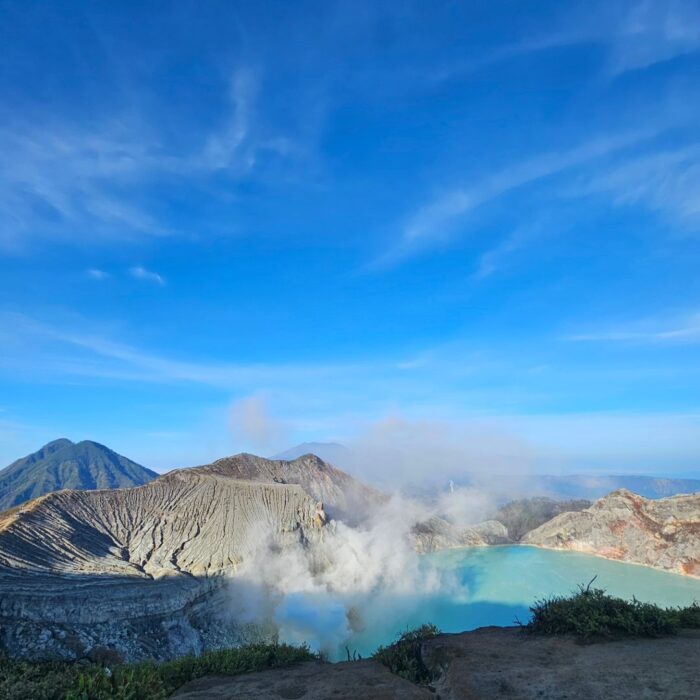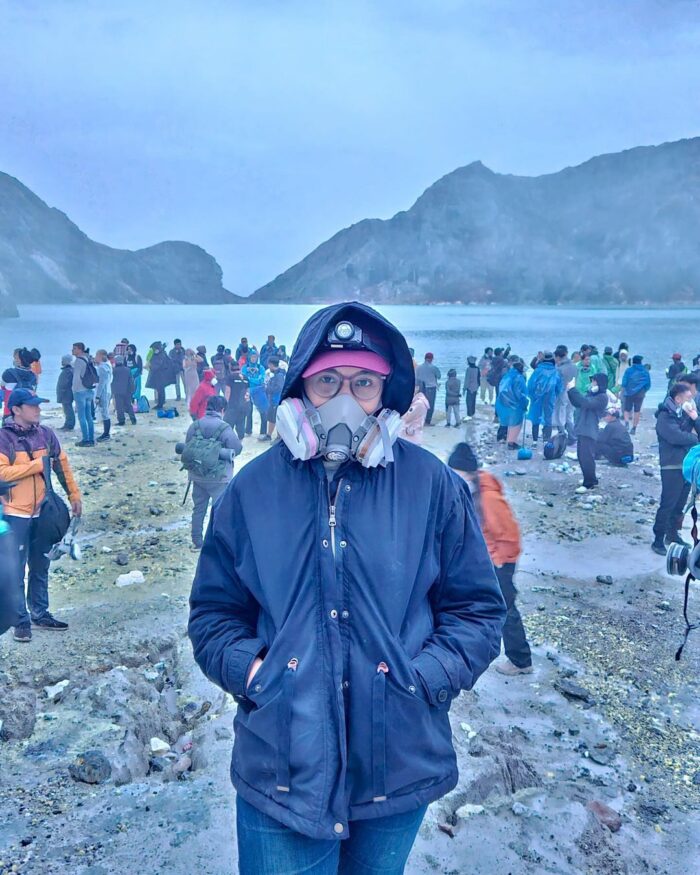Ijen Plateau Blue Fire
Ijen Plateau Blue Fire
The Ijen Plateau on the Indonesian island of Java boasts a unique natural phenomenon known as the Blue Fire. Nestled between emerald slopes and swirling clouds, this mesmerizing sight colors the volcanic landscape with an exquisite glow. Travelers from around the world are captivated by its beauty. But, what is the story behind this captivating name, and what makes these blue flames so unique?

Instagram.com @visurr
A Dance Name between Beauty and Danger
The name ‘Blue Fire’ is a testament to its mesmerizing appearance. Unlike the orange-colored flames usually associated with fire, this fire burns with an eerie electric blue color. This color arises from the burning of sulfur gas, which ignites at a lower temperature than other fuels, creating a distinctive blue glow. Adding to the mystique, local folklore attributes the name to a blue spirit that inhabits the crater. This story adds an air of mystery to an already captivating phenomenon.
The Ijen Plateau, also known as Kawah Ijen, is home to a turquoise volcanic lake, which is the largest acidic crater lake in the world. However, what really draws the eye are the blue flames emanating from its fiery heart. The locals originally dubbed it ‘Api Biru’, a name that quickly resonated with tourists and became shorthand for this incredible sight.

Instagram.com @ponycetin
Unveiling the Uniqueness of Ijen Plateau Blue Fire
Ijen’s Blue Fire is not only visually stunning but also a unique phenomenon with interesting characteristics. Deep inside the volcano, molten sulfur ignites on contact with the air, creating a fire that burns at 600 degrees Celsius. These ethereal flames, up to five meters high, color the darkness with an otherworldly blue hue due to the presence of sulfur dioxide.
This breathtaking sight can only be found in two places in the world: Ijen Plateau and Dallol Volcano in Ethiopia. This rarity makes it a truly unique phenomenon.
Reaching the Ethereal Light: Your Gateway to the Ijen Plateau
To witness the breathtaking view of the ethereal light, you must reach the Ijen Plateau, located in Banyuwangi Regency, East Java. There are several accommodation options available for travelers, ranging from affordable lodgings in nearby towns like Banyuwangi or Bondowoso to more luxurious options closer to the crater. Choose based on your preferences and budget. If your journey starts from Yogyakarta, it will be a scenic 7-8 hours drive by car.
To reach the plateau, the most common route is a 3-4 hour jeep ride from Banyuwangi to Paltuding, the starting point of the hike. The hike itself is challenging but rewarding, taking 2-3 hours to reach an altitude of 2,300 meters.
Witness the Miracle: Ijen Plateau Blue Fire
To witness the Blue Fire, planning your trip is essential. The best time to experience the Blue Fire is in the early hours of the morning, between 2 am and 4 am, before dawn breaks. This time period offers the darkest conditions, allowing the blue flames to shine with full intensity.
The dry season, which lasts from May to September, typically offers the most consistent visibility due to clear skies and reduced volcanic activity. However, even during the rainy season, it is possible to see the Blue Fire, albeit at a lower intensity. Therefore, let us explore the secrets of the seasons and determine the best time to visit Ijen Plateau based on your desired experience and the weather conditions.
Embracing the Charm of the Dry Season
Experience clear skies and comfortable temperatures when visiting Ijen Plateau during the dry season from April to October. This period showcases vibrant colors and offers optimal conditions for witnessing the iconic blue flames, triggered by volcanic gasses that ignite on contact with air.
Witnessing the Elusive Ijen Plateau Blue Fire
The sight of the elusive blue flame is a rewarding experience. However, the visibility of this natural wonder is highly dependent on weather conditions. The best opportunity to witness it is during evenings in the dry season when there are few clouds and clear skies.

Instagram.com @ponycetin
Drawbacks of the Dry Season
While the dry season offers ideal conditions, it also coincides with peak tourist season. Therefore, visitors should expect larger crowds, especially on weekends and holidays. Additionally, accommodation and tour prices may be higher compared to other seasons.
Advantages of the Rainy Season
The rainy season offers a quieter experience with fewer tourists, resulting in lower accommodation costs and tour fees. This can be especially appealing to budget-conscious travelers.
Challenges to Consider
Rain can greatly reduce visibility of the blue flame, making it an unreliable sight. Hiking trails can become muddy and slippery, requiring extra caution and potentially slowing down the journey. Additionally, adverse weather conditions may cause some tours to be canceled.
Finding the Sweet Spot
If your main goal is to see the Ijen Plateau blue fire, prioritize the dry season. However, if you are flexible and do not mind occasional downpours, the transitional seasons (April-May and October-November) offer a good balance between fewer visitors and clear skies.
Conquering the Climb: Safety Tips for Beginners
To reach the crater rim, you must hike about 3 kilometers. Although not technically challenging, the altitude and steep incline can be demanding. Therefore, prioritize safety.
- To ensure a safe and comfortable hiking experience, it is important to wear appropriate gear such as warm clothing, sturdy shoes, and rain protection.
- Hiring a guide who has a good understanding of the terrain and safety protocols is highly recommended.
- Adjust to the altitude by starting slowly and avoiding pushing yourself.
- It is important to be aware of any volcanic activity in the area. Respect restricted areas and obey all warnings.
- Be considerate of the environment by leaving no trace and avoiding touching fires or volcanic rocks.

Instagram.com @phaalitta
Embark on Your Blue Fire Journey: A Call to Adventure
The Ijen Plateau Blue Fire is not just a sight; it’s an experience. Witness the raw power of nature, be humbled by its beauty, and capture memories that will last a lifetime. Gather your bags, embrace the adventure, and prepare to be captivated by the enchanting dance of blue flames against the backdrop of a volcanic wonder. Are you ready to answer the call of the Ijen Plateau Blue Fire?